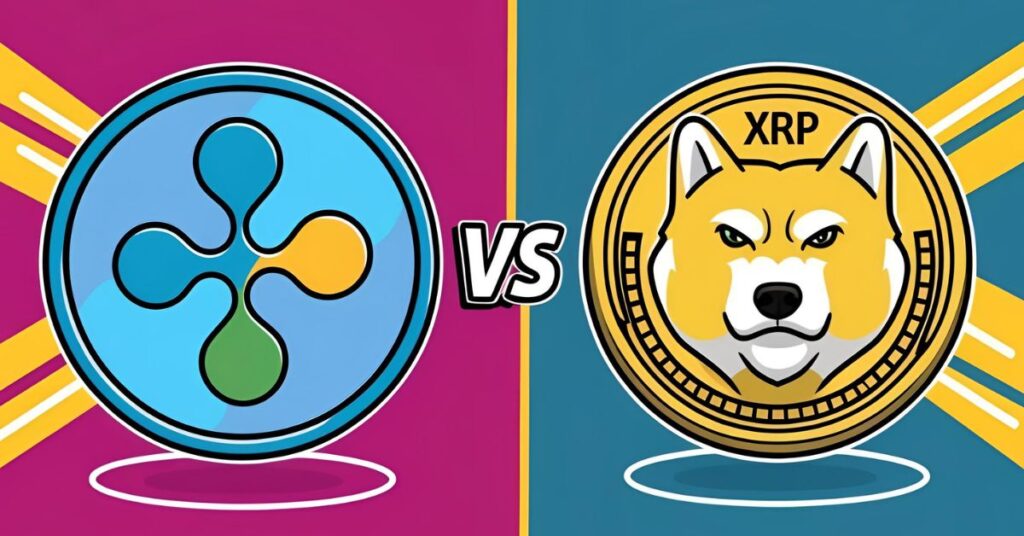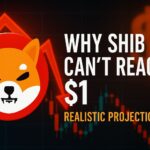Shiba Inu Coin (SHIB) and Ripple’s XRP are two popular cryptocurrencies with very different stories. While SHIB emerged from meme culture, XRP was built to solve real-world payment problems. Both coins have loyal communities, but when it comes to long-term potential, they follow very different paths.
Let’s compare SHIB and XRP across key areas like price history, utility, growth drivers, and future outlook.
Price Performance: XRP Wins the Past Year
Over the last year, Ripple’s XRP has gained over 250%, while SHIB has dropped more than 50%. This contrast highlights a major difference in how investors view each project.
XRP’s strong comeback came after Ripple resolved its long legal battle with the U.S. Securities and Exchange Commission (SEC). Once the lawsuit ended, several major crypto exchanges relisted XRP. This boost restored investor confidence and helped XRP’s price rebound.
Meanwhile, Shiba Inu Coin (SHIB) struggled with fewer updates and lower investor confidence. As new blockchains like Solana and Cardano attracted more attention, SHIB lost momentum.
Dive deeper into Ripple (XRP)—read our privious article
Purpose and Utility: Meme vs. Payments
SHIB started as a joke but quickly grew into one of the biggest meme coins. It was launched on the Ethereum blockchain in 2020 and has since built a wider ecosystem. This includes smart contracts, staking, and its Layer-2 network called Shibarium, which improves transaction speed. SHIB also has a decentralized exchange called ShibaDEX, which connects it to other Proof-of-Stake (PoS) tokens.
Despite these additions, SHIB still carries a meme coin label. It lacks strong use cases outside of speculation. No major companies use it for payments, and there’s little institutional interest.
Ripple’s XRP, on the other hand, was built to support fast and low-cost financial transactions. Ripple launched it in 2013 with the goal of replacing traditional banking systems for cross-border payments. Today, Ripple’s blockchain supports real-time remittances and currency exchanges.
Although XRP didn’t fully replace fiat in financial transactions, it still holds value for its speed and cost-efficiency. Ripple also continues to grow its use cases by adding Ethereum-compatible smart contracts and launching a USD-backed stablecoin
Tokenomics: Supply and Burn Mechanisms
XRP and SHIB have very different supply models.
- XRP was pre-mined with a cap of 100 billion tokens. About 58 billion tokens are in circulation, with the rest held in escrow by Ripple. Tokens are released periodically to maintain liquidity, which gives XRP inflationary traits.
- SHIB had a massive supply of 1 quadrillion tokens at launch. Since then, over 40% of SHIB’s supply has been burned to reduce inflation and increase scarcity.
SHIB’s deflationary approach is designed to increase value over time, but the large remaining supply still limits significant price movement. XRP, while inflationary, may offer more predictable market behavior because of Ripple’s control over token releases.
Ecosystem Growth and Innovation
Ripple is expanding its blockchain ecosystem. It is adding smart contracts, creating a stablecoin, and promoting tokenization of real-world assets like real estate and art. These moves aim to turn Ripple into a full-service financial platform.
SHIB is also trying to grow. Shibarium, ShibaDEX, and staking are real improvements. But they still lag behind faster and more scalable chains like Solana or Cardano. Also, Dogecoin still dominates public awareness as the original meme coin, boosted by Elon Musk’s support.
Risks and Volatility
Both SHIB and XRP carry risks. SHIB is extremely volatile and still depends on speculation. Its value could spike or crash with little warning.
XRP is more stable but not without concerns. Regulatory uncertainty could return, and Ripple’s control over XRP distribution is seen by some as too centralized.
Final Verdict: Which Has More Potential?
If you’re looking for a fun, speculative coin with viral potential, SHIB might still appeal to you. It has a strong community and ongoing development, though its upside is limited without real-world use or institutional support.
If you’re seeking a crypto asset with practical use cases and a growing ecosystem, XRP is the better choice. It has recovered from major legal challenges, gained institutional interest, and is expanding its capabilities through smart contracts and stablecoins.
Verdict: XRP has more long-term potential thanks to its solid foundation, real-world utility, and increasing institutional attention. SHIB remains a strong community-driven token, but it faces tougher competition and fewer real-world applications.



